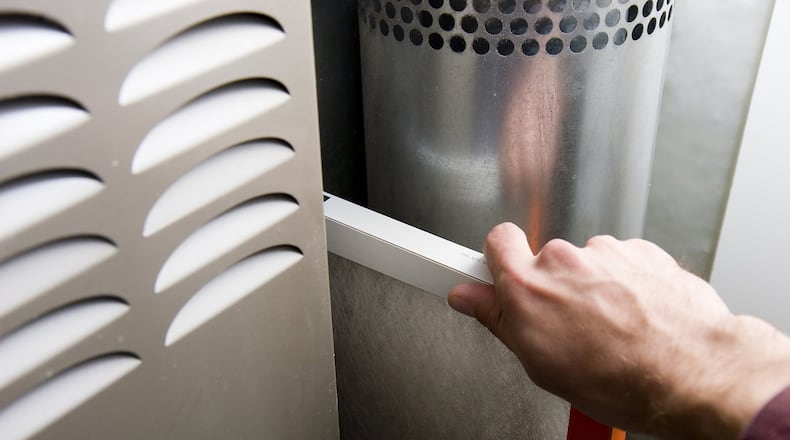Q: Can you tell me why it is so important to install the air conditioner filter in a certain direction? What harm, if any, does it do if it's backwards? My husband always puts it in backwards.
— Nancy Henrichs
A: Now that we're tuning up our furnaces for winter, let me assure you that HVAC companies are not just blowing hot air when they implore you to install filters correctly.
In fact, they warn that constantly putting them in backwards like your apparently worser half could conceivably result in your system blowing no air at all. Here’s why:
Although the two sides of an air filter might look the same, they are not. If you’d examine them with a magnifying glass, you’d find that one side is more porous than the other. This allows the filter to effectively trap airborne particles while also minimizing the slowdown of airflow through your system.
By installing your filter backwards, air will have a harder time flowing through the filter and your air handler will have to work harder to make up for the loss of airflow. This could lead to higher utility bills and possibly damage your furnace or air conditioner. And the last thing you want is your HVAC system conking out on a zero-degree night or 105-degree day.
So be sure to look for the arrows that are printed on the sides of the filters because they show you which way the filters are supposed to be installed. That arrow must always face toward the furnace and away from the return duct that carries the air in need of heating or cooling. Forced air furnaces recirculate air throughout a home, blowing air (cooled or heated) out while pulling spent air back in for another cycle.
To make the chore next to automatic, you might consider grabbing a permanent marker and drawing the arrow in its proper direction on the actual furnace housing or ductwork. That way you easily can make sure the two arrows match the next time you change your filter. Dirty filters are also a drag on the system, so don’t forget to change them at intervals you’ll find recommended on most filters.
If my word picture has left you more confused than ever, you might want to watch a short video at www.youtube.com/watch?v=-Y06YJpVZbw
About the Author
Keep Reading
The Latest
Featured


